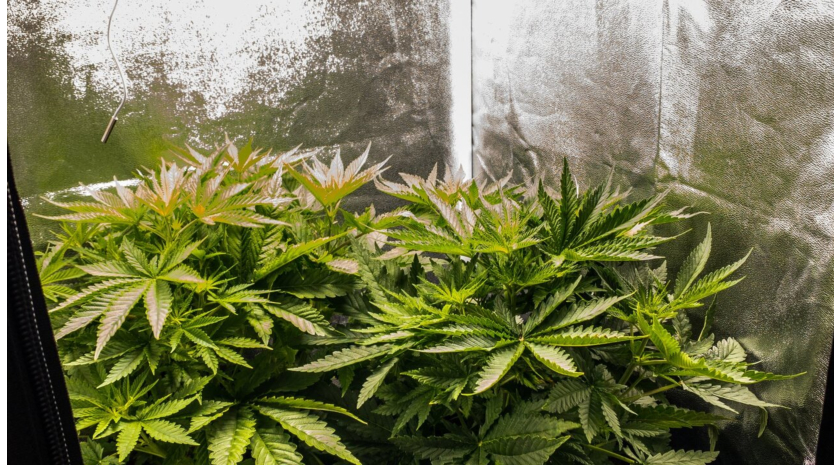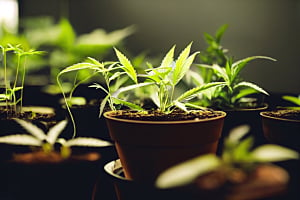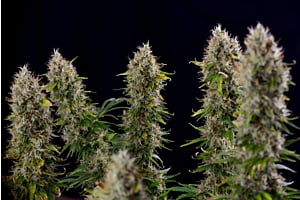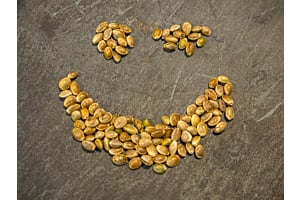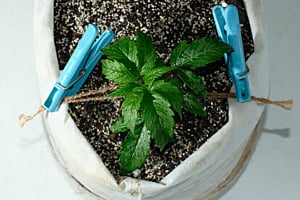Is it getting hot in here, or is it just weed? Creating a comfortable environment or sticking to a grow room chart for cannabis temp and humidity is something many growers find challenging. When you're done reading this, you'll see how easy it can be.
Without proper control of moisture levels, your greenery dehydrates, drowns, and eventually dies. Don't freak out; we've got life-saving tips to achieve optimum weed temp and humidity.
We discuss why humidity and temperature are so important and how to get them right to keep plants happy through all growing stages.
Importance of maintaining optimal humidity and temperature for cannabis
What is the best temperature and humidity for growing weed? To know how to optimize the ideal temp and humidity for cannabis and why it’s essential, you must first understand cannabis plants' respiration process.
- During photosynthesis, plants must convert the sugars absorbed into energy to help the flora grow.
- To transform sugar into energy, they must derive carbon dioxide from the air.
- Carbon dioxide enters through the plants' pistils which function like tiny pores.
- The intake of carbon dioxide causes flora to lose water to the environment.
- Relative humidity dictates the amount of water loss your marijuana crops suffer. Extremely low levels cause plants to suck too much water from their roots, and extra high humidity leads to water retention below ground level.
Temperature and humidity go hand in hand. If the former is off, your plants suffer even with optimal levels of the latter. The crops get damaged differently based on whether it's too hot or cold.
Some cannabis seeds develop into plants that handle extremely warm or chilly climates. Generally, a grow room temp lower than 60°F and higher than 80°F causes heat stress and stunts the growth of most crops.
If it's overly hot, cannabis becomes susceptible to root rot, heat burn, and reduction of terpenes and resin. When the temperatures are too cold, plants produce lower yields and are vulnerable to mold when paired with high humidity.
Maintaining the ideal temperature and humidity for weed gives you generous harvests of vibrant colored buds with strong aromas and potent THC and CBD counts. Some strains turn a gorgeous purple shade with cold exposure, so maintaining optimal temperatures affects your final product.
Sticking to a chart for cannabis temp and humidity is essential because crops absorb enough moisture from the leaves when the levels are ideal. This process prevents them from storing excess water in the roots or struggling to hydrate and sucking moisture out of them and the stems.
Factors affecting levels of humidity for weed plants
Finding the perfect humidity in a grow room (relative humidity, or RH) is crucial for growing cannabis. Relative humidity (RH) refers to how much water vapor is in the air in an area.
Here are the three main factors that affect your success in achieving the best temp and humidity for cannabis:
Growing stages
Cannabis plants have three main growing stages; seedlings, vegetation, and flowering. Their roots, branches, and leaves develop and use water more efficiently as each phase progresses. The humidity for seedlings should be lower than for mature marijuana crops.
Climate and region
Cooler regions have dry or less moist air, so you may have difficulty keeping humidity levels up if you live in a cold climate.
Tropical areas or hot conditions tend to have higher humidity, even with low temperatures. Cannabis plants usually thrive in a humid climate, but an excess leads to mold buildup. If you are seeking for a strain that could thrive in cold areas, look at this collection of winter cultivars.
Genetics
Some cannabis species better handle hot or cold climates with low or high humidity. There are strains like Afghan Kush that do well in cooler temperatures thanks to their genetics. Some buds like the ones from Blue Dream feminized seeds thrive in high humidity and need hot temperatures to develop properly. If you want less work, pick a strain that suits your climate.
The four stages of the cannabis plant cycle
There's a specific temp and humidity for weed cultivation in each stage of your plant's life cycle. Every phase has unique metabolic reactions meaning they use energy differently, so the humidity levels either assist or deter their growth.
Seedling stage
Seedlings are fragile with tiny roots, and extreme moisture quickly causes mold buildup and damages them. Their underdeveloped roots rely heavily on their leaves for hydration, so humidity plays a huge role in nourishing seedlings.
It's essential to maintain the proper humidity for seedlings because they develop critical features of the cannabis plant in this phase. Seedlings sprout 3–13 finger leaves, eventually becoming the classic 5–7 finger marijuana leaves.
Healthy seedlings and clones have short, thick foliage with vibrant green leaves that aren’t fully formed. Use a chart for cannabis temp and humidity to keep the climate humid enough for substantial root development and sufficient water uptake to the leaves.
Here are our recommended temperature levels and humidity for seedlings:
- High relative humidity: 65–70%
- Day temperatures/lights on: 77°F
- Night temperature/lights off: 70°F
Vegetation period
In the vegetative stage, plants have stronger roots and perform efficient water uptake through evaporation. You can tell your seedlings have begun vegging when they develop several sets of pointed leaves.
If you maintain the best temp and humidity for weed, plants grow rapidly at this stage. New well-structured leaves and branches, stronger nodes, and well-grounded roots develop. During vegging, cultivators typically begin defoliation because the growth is sometimes aggressive.
You can keep cannabis plants in vegetation for as long as you like since they need light cycle changes to trigger flowering. Autos begin blooming without manual interference, so the autoflower temperature and humidity chart differ from regular or feminized seeds.
When vegging, cannabis plants develop stronger and more efficient root systems, helping them take in water easier. Lowering humidity during the vegetative stage prevents soggy roots, weak branches, nutrient lockout, and drowning.
Reduce the humidity levels by 5% every week—suddenly dropping RH may stress your plants out or cause shock. Here's the best cannabis growing temperature and humidity when vegging:
- Moderate humidity levels: 40–60%
- Day temperature/lights on: 71–82°F
- Night temperature/lights off: 64–75°F
Flowering period
When flowering begins, it's crucial to stick to the chart for cannabis temp and humidity requirements in your grow room. Be meticulous about checking humidity levels at this stage, as anything over 60% can rapidly deteriorate your crop and affect bud quality.
During flowering, marijuana plants develop an incredibly strong root system to fulfill their water requirements. There's no need for high humidity, and growers usually defoliate, removing excess leaves that typically absorb moisture.
Maintaining the best temperature and humidity for flowering is essential for hindering mold buildup, as this can transfer from crop to crop. During this phase, mold viciously spreads because the greenery doesn’t need excess moisture, and it can cause a variety of conditions affecting the flowers.
Here's the temp and humidity for weed plants during the flowering stage:
- Low humidity: 40–50%—never allow humidity levels above 60%
- Temperatures: 68–79 °F
Late flowering (1-2 weeks before harvest)
Up till now, followed a grow room temp and humidity chart and maintained a comfortable environment to prevent your flora from stressing out. When crops near the end of flowering, a little stress is good. Bringing down humidity levels forces plants to produce more sticky resin to protect themselves, giving you more potent buds.
Aside from trichome production, lowering humidity hinders the formation of mold and mildew and deters fungal infections from affecting greenery. Preventing bud rot is the number one reason for decreasing RH during flowering.
High humidity during flowering, especially in the later stages, disfigures the appearance of the buds and reduces their aromatic profile. Stick to these temperature requirements for the healthiest buds possible:
- Low humidity: 30–40%
- Day temperature/lights on: 64–75°F
- Night temperature/lights off: 60–68°F
As a summary of all growth stages, here's our handy chart for cannabis temp and humidity:
|
Plant Phase: |
Humidity levels (RH): |
Temperature day: |
Temperature night: |
|
Seedlings |
65–70% |
77°F |
70°F |
|
Vegetative |
40–60% |
71–82°F |
64–75°F |
|
Early flowering |
40–50% |
68–79 °F |
68–79 °F |
|
Late flowering |
30–40% |
64–75°F |
60–68°F |
Adjusting humidity levels and temperature
Following a cannabis temp and humidity chart to meet the ideal levels is essential—too much RH leads to diseases and fluid buildup. Too low humidity levels stress crops out, cause necrosis, or reduce bud quality.
When plants have the correct amount of RH, their pores open up, allowing them to respire more CO2 and grow quicker and healthier. To maintain the best temp and humidity for flowering weed, use a hygrometer and a thermometer to check and adjust regularly.
Ways to lower humidity
When the humidity levels are too high, the risk of mold, contamination, and diseases increases. Here's how to lower high humidity during flowering or vegging:
- Water the plants at the beginning of the light period. The room is typically cooler, and moisture is immediately absorbed.
- Use a dehumidifier until you reach the best temp and humidity for weed. Ensure it's large enough to suit your growing area. Small models lack substantial tank space to keep up.
- Release more cool air in the grow room or increase the speed of your exhaust fan to push warm air outside.
Ways to lower temperatures
Most cannabis plants handle high temperatures better than extreme lows, but scorching conditions can still cause serious damage. It leads to rapid water loss rendering your flora vulnerable to nutrient deficiencies and burn. Here's how to cool the area and get the ideal temp and humidity for weed:
- Invest in a good air conditioning unit. AC also keeps humidity levels on the lower side.
- Implement a cool tube if you use High-Pressure Sodium (HPS) bulbs for lighting.
- Keeping the lights off during the day prevents temperatures from soaring, especially in hot weather. Putting the lights on at night makes the best of cooler nighttime conditions creating the best temp and humidity for weed.
Lowering temperatures is essential to prevent heat stress, especially if you live in a hot climate. If your plants show signs like heat burn with browning and crispy leaves, reduce the temperature urgently.
Raising humidity
If humidity levels are too low, it causes greenery to wilt and eventually die due to water stress. Here are some tips for raising humidity levels to meet the requirements on your cannabis temp and humidity chart:
- Use a suitable humidifier for the size of your grow area.
- Hang wet towels or place containers with water around the room.
- Sprinkle water on the top layer of soil to keep it constantly moist.
- Use a spray bottle to raise humidity levels temporarily. This trick especially helps the leaves absorb water easily and is a great trick to raise humidity for seedlings.
Raising temperatures
If a low, high, or unstable climate is something you battle with, picking a cultivar with ruderalis genetics helps. The plants from Skunk #1 feminized seeds are one of many hardy strains that still grow in harsh conditions.
Low temperatures and humidity for seedlings are especially dangerous as they could kill them. Cold conditions in full-grown cannabis plants slow down growth, dry up trichomes, and potentially lead to root shock. Here's how to warm things up:
- Install a heating mat at the bottom of your grow room or tent.
- Use a basic space heater. Ensure you use a thermostat to check the temperature because there's a risk of overheating with these devices.
- Upgrade to higher wattage grow lights
Follow a chart for cannabis temp and humidity to keep plants comfortable
Humidity keeps your plants hydrated and stimulates growth, but excessive or inadequate amounts damage them. Check the levels routinely and adjust them using the tips we provided. Follow our chart for cannabis temp and humidity for optimum humidity through all the stages.
Genetics plays a big role as some strains have a higher tolerance for uncertain conditions. We stock a wide range of cannabis seeds at SeedSupreme with stable genetics. Shop our top-shelf products and join our happy customers today.

 THC
THC THCA Flower
THCA Flower